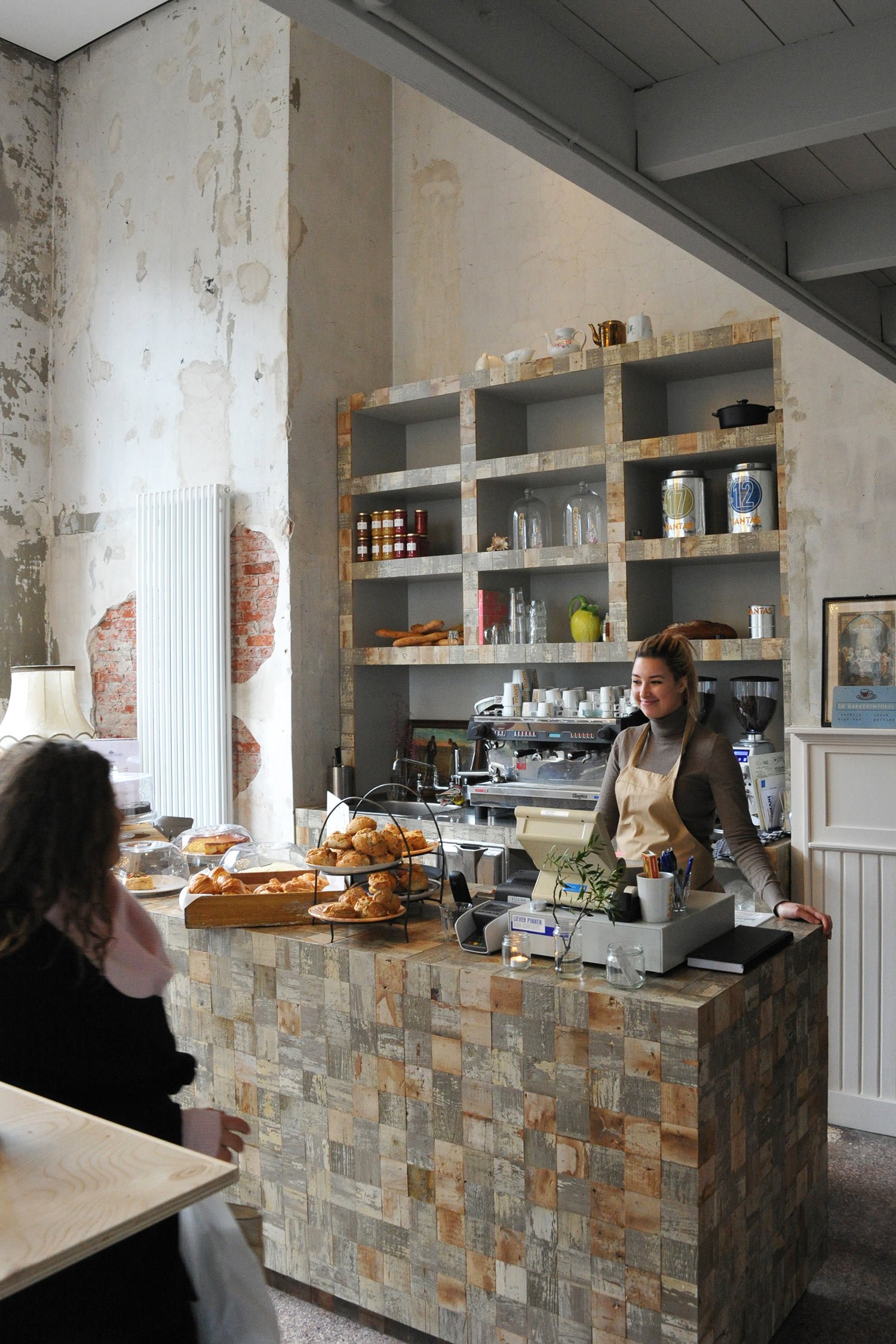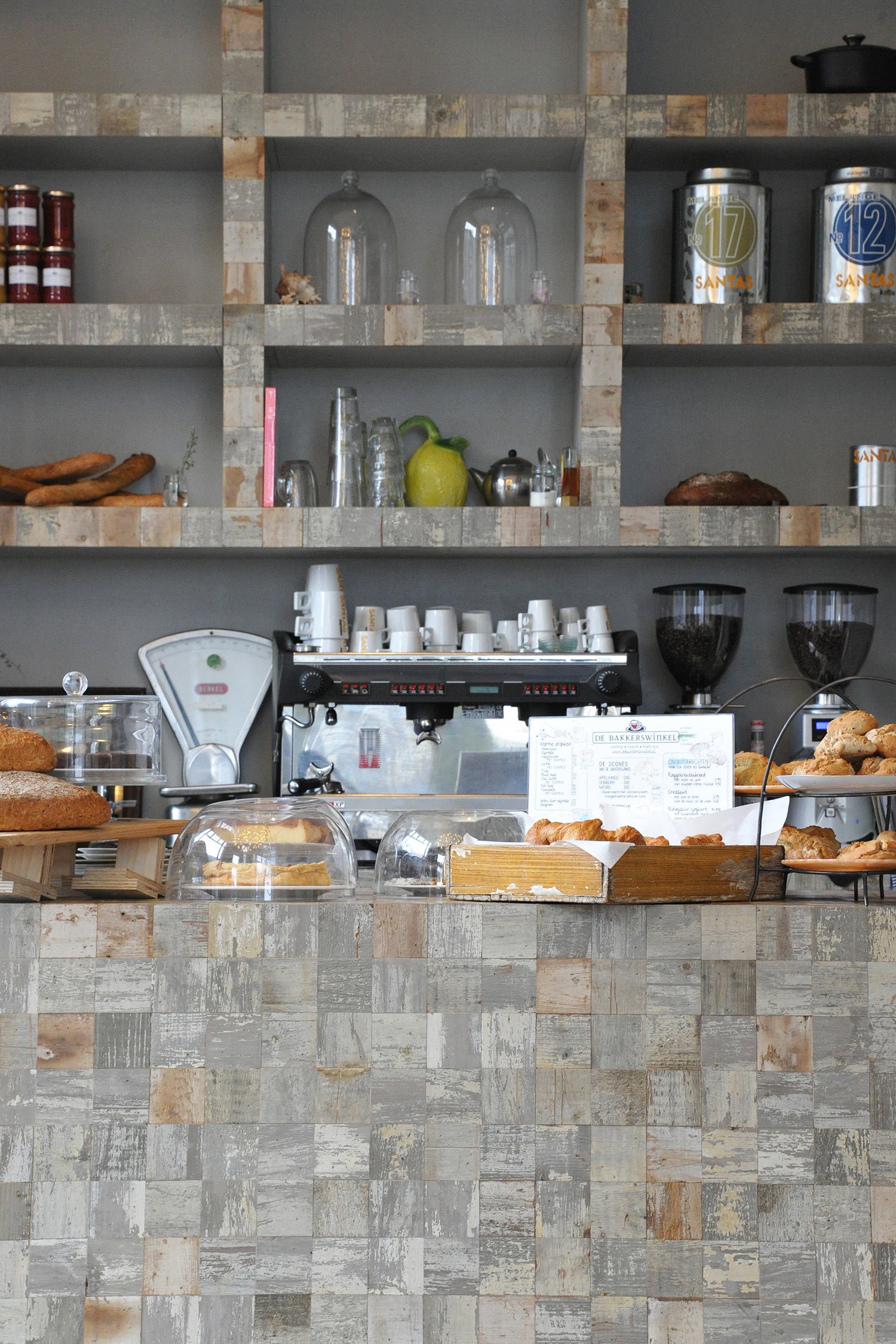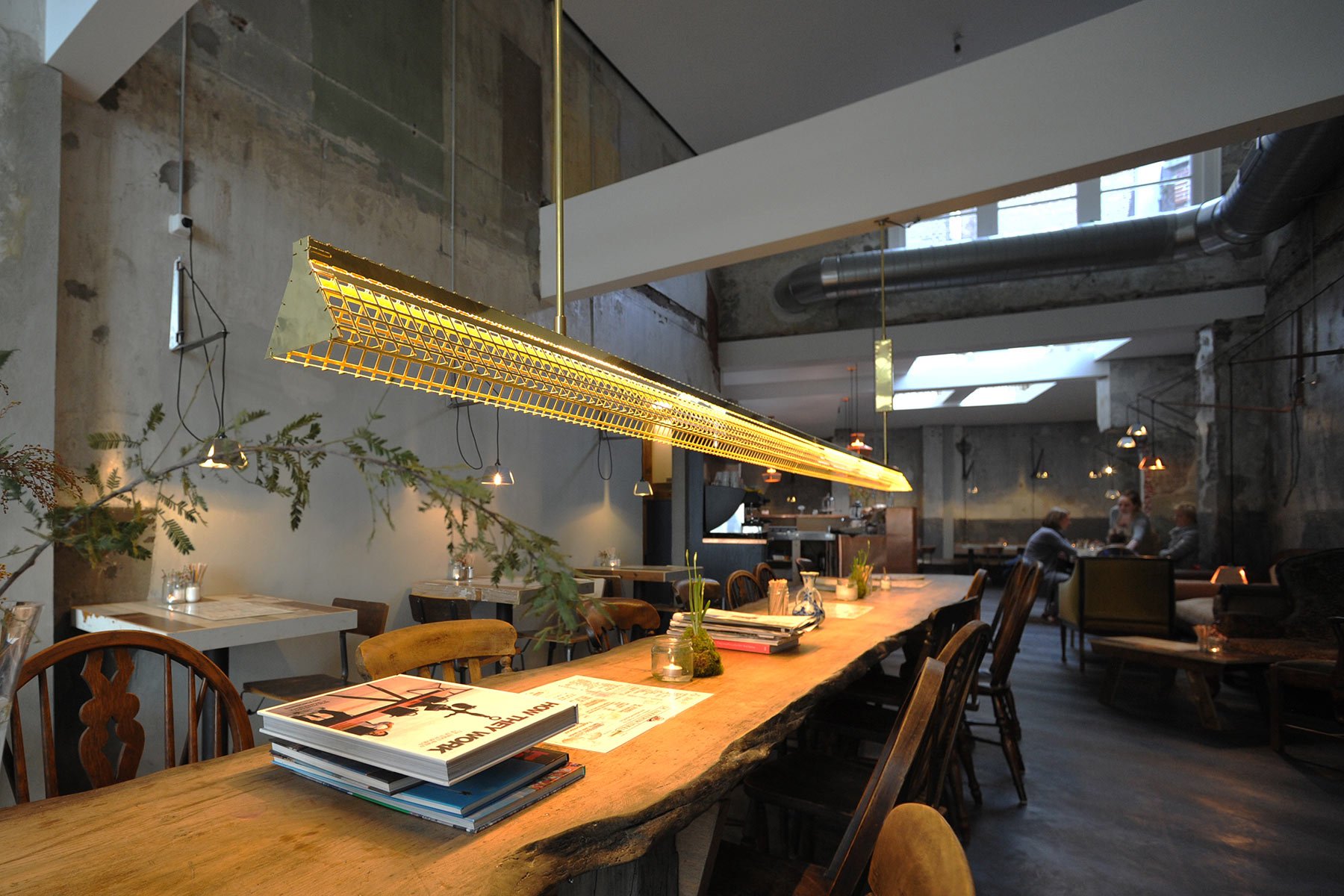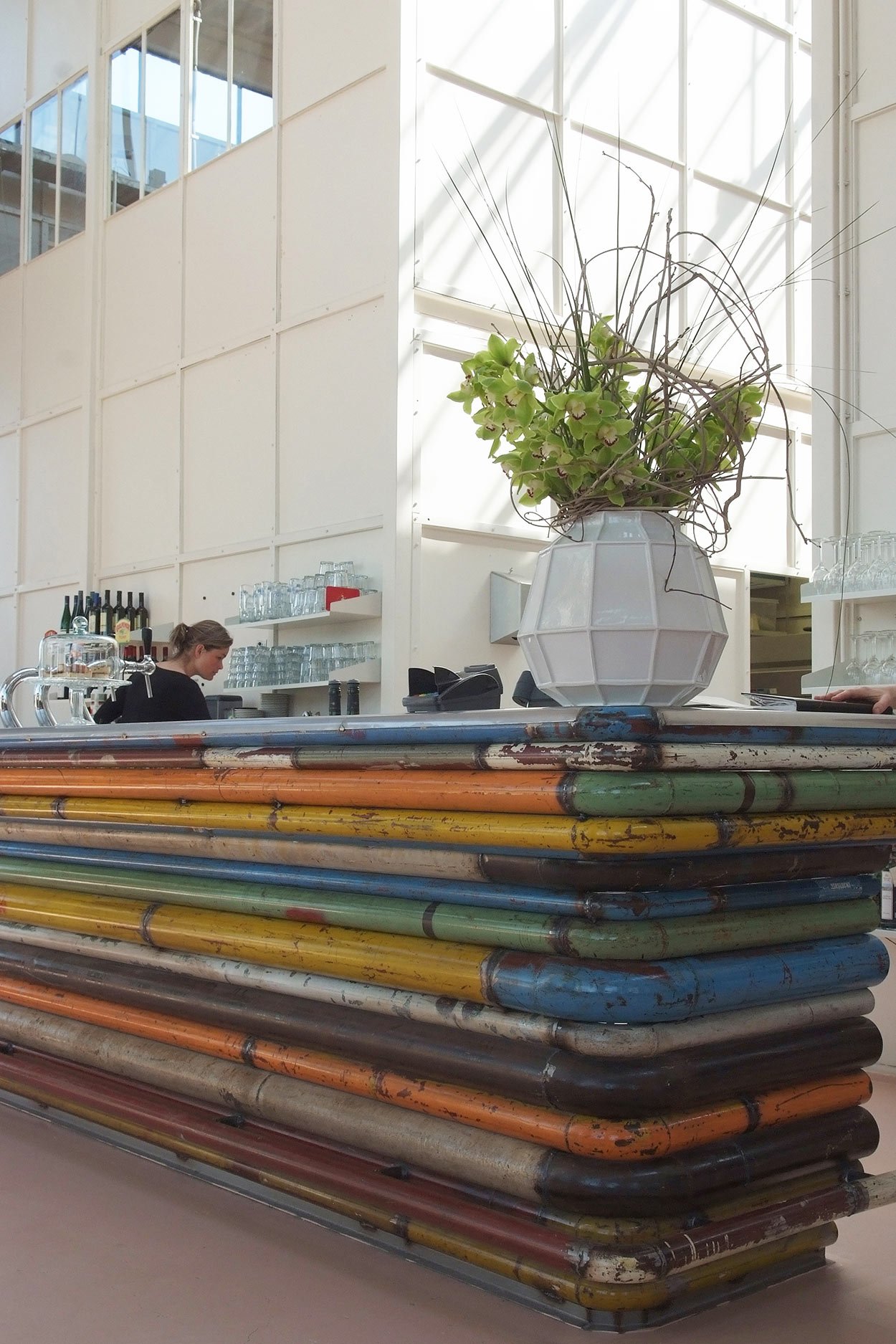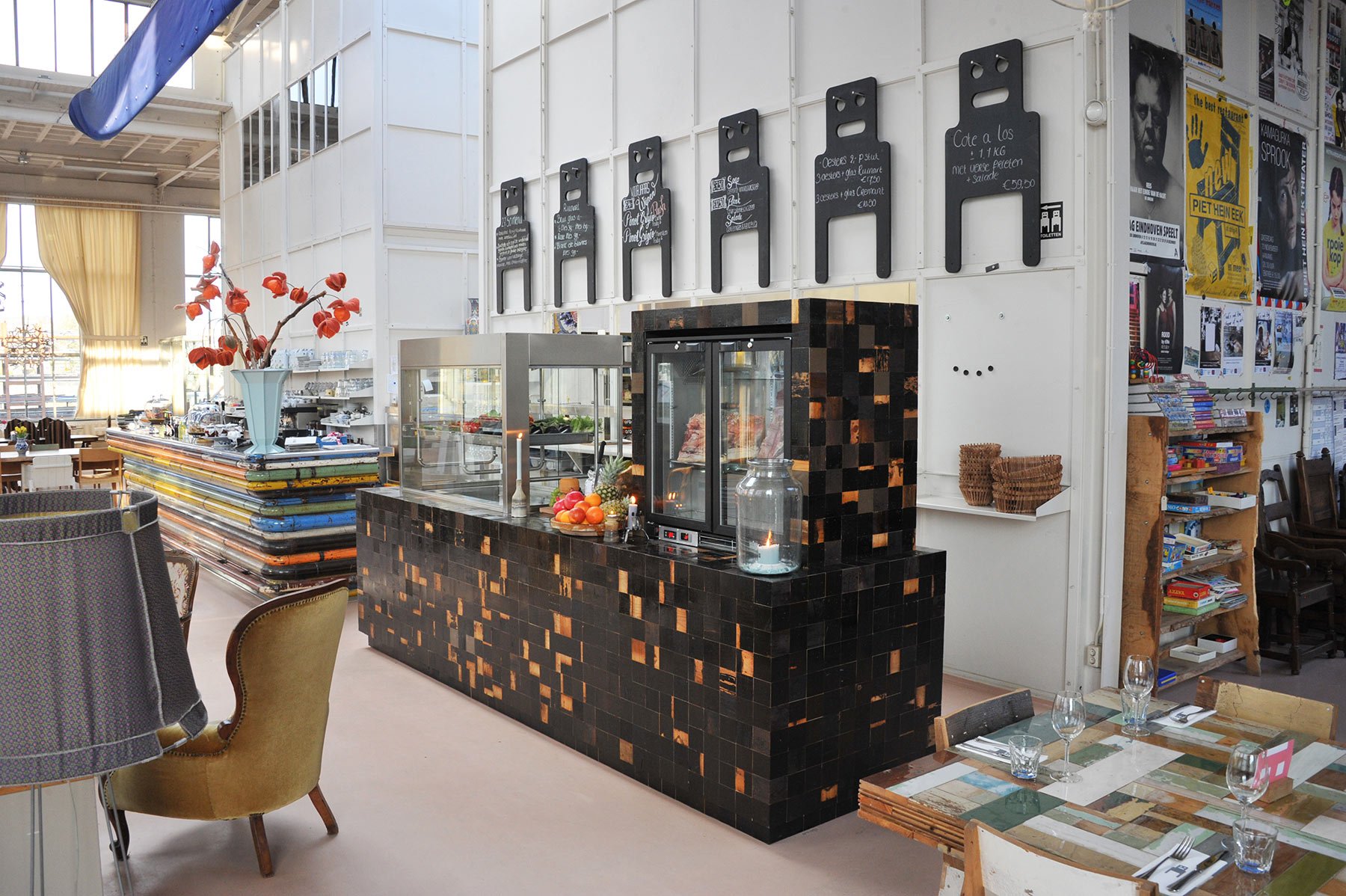Gessato recently got the chance to converse with designer Piet Hein Eek, the man behind LEFF Amsterdam’s Tube Speaker (on the blog here), among many other artful designs. Based in the Netherlands, Eek works in product and furniture design, architecture, interiors, and even food. His world is diverse, creative, and full of thought. Learn more about his inspirations in the five-question interview below.
GBLOG: You’ve made your name in the furniture design world by repurposing and recycling old wood (among other media) into new pieces. Can you explain the source of this apparent fascination with previously used materials?
EEK: Of course this question has been asked frequently in the past. I used to give an answer explaining how I walked on a lumberyard as a poor student and saw the beautiful cheap scrap wood. The wood could be processed in the wood atelier at school. So the answer for that moment [was] beautiful, cheap, and the machines and my own labour where available. Nowadays, I answer much more according to my specific qualities. If you’re not focused on materials and available technique and labour, one would never recognize the quality of it. So it starts with my general focus on material, technique and craft. It’s like the chicken and the egg: there’s no egg without a chicken, but the other way around is possible and gives the right order.
GBLOG: In what ways do you feel the conceptual and aesthetic qualities of recycled wood differ from regular stock, and how do you approach that in your designs?
The specific quality and lack of quality determines the designs. (Like in all my designs, the material and the process of making a product is leading.) Scrap wood is beautiful and always different because it has a history. I will not mention now the influence of the lack of quality of the material which determined the designs a lot but will focus on the quality. The fact that the material is always different makes it possible to make serial produced unique products. One can make a series with random materials but also pre-select the material to determine exactly the colors and textures one wishes.
GBLOG: Describe your creative process; do you find that your choice of material precedes the design of form and function? To what extent do you feel that materials bears an equal (or greater) importance to the overall design?
Like I described, for me, the material, technique, and craft are leading. [Contrary] to many other designers I try to do what’s most obvious, what’s normal. Always using and taking advantage of what’s available. So each design is inspired by material, machines, and labor which are available. This sounds quite [logical,] but most designers are mainly aiming to make new futuristic designs and the practical part comes later. This extreme pragmatic approach of making extremely normal and rational products using what’s available provides a lot of fresh new ideas because it’s not the common way. We have to it like this because it’s very difficult to design produce and distribute a product. The price is extremely important, so we’ve to be pragmatic.
GBLOG: What inspired you to create furniture when your careful and meticulous attention to each piece is so similar to that of a fine artist? Do you think distinction between artist and designer is necessary?
The answer to this question is not a general truth but very [much] according to my own world. For my exams, I had to write a sort of thesis. One of the sentences I wrote was that one should feel like a fish in the water. Two decade later, I realized that [was] the only goal I ever had in life: creating my own environment in which the people I work with and myself are happy and there for flourishing. By accident, this also provided a situation that we’re producing with a dedication much more intense than most production environments. In our world, there’s no distinction between artist and designer because of the holistic approach. Creating is the main issue.
GBLOG: All business aside—what’s cooking at the Restaurant of Piet Hein Eek?
Our chef, Martien Pruijmboom, who started to work last summer and worked previously for two-star restaurants makes beautiful real food, and we’re very happy to talk full of enthusiasm about food like our furniture.


